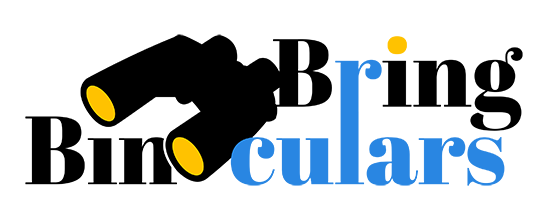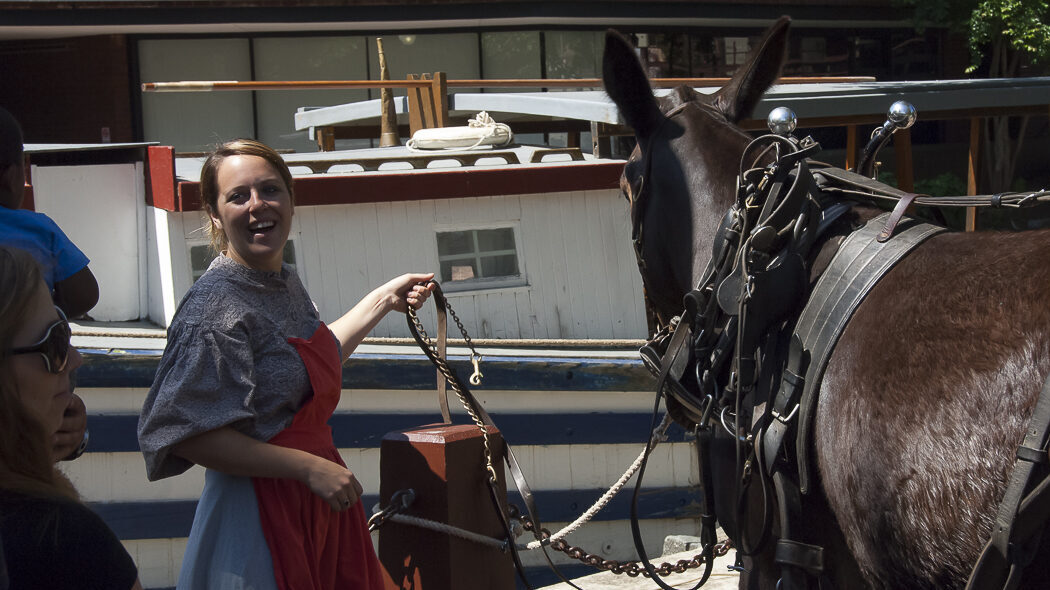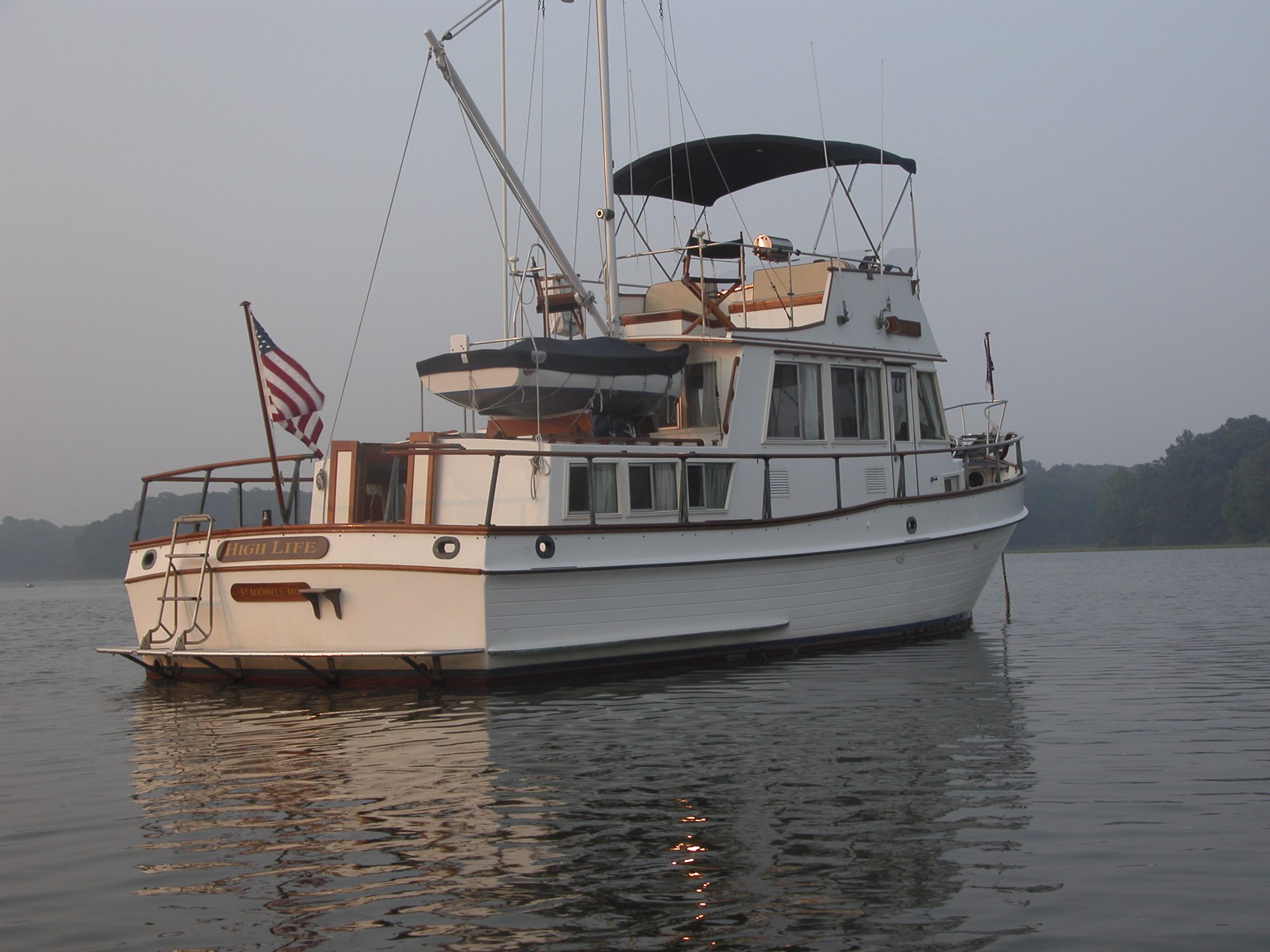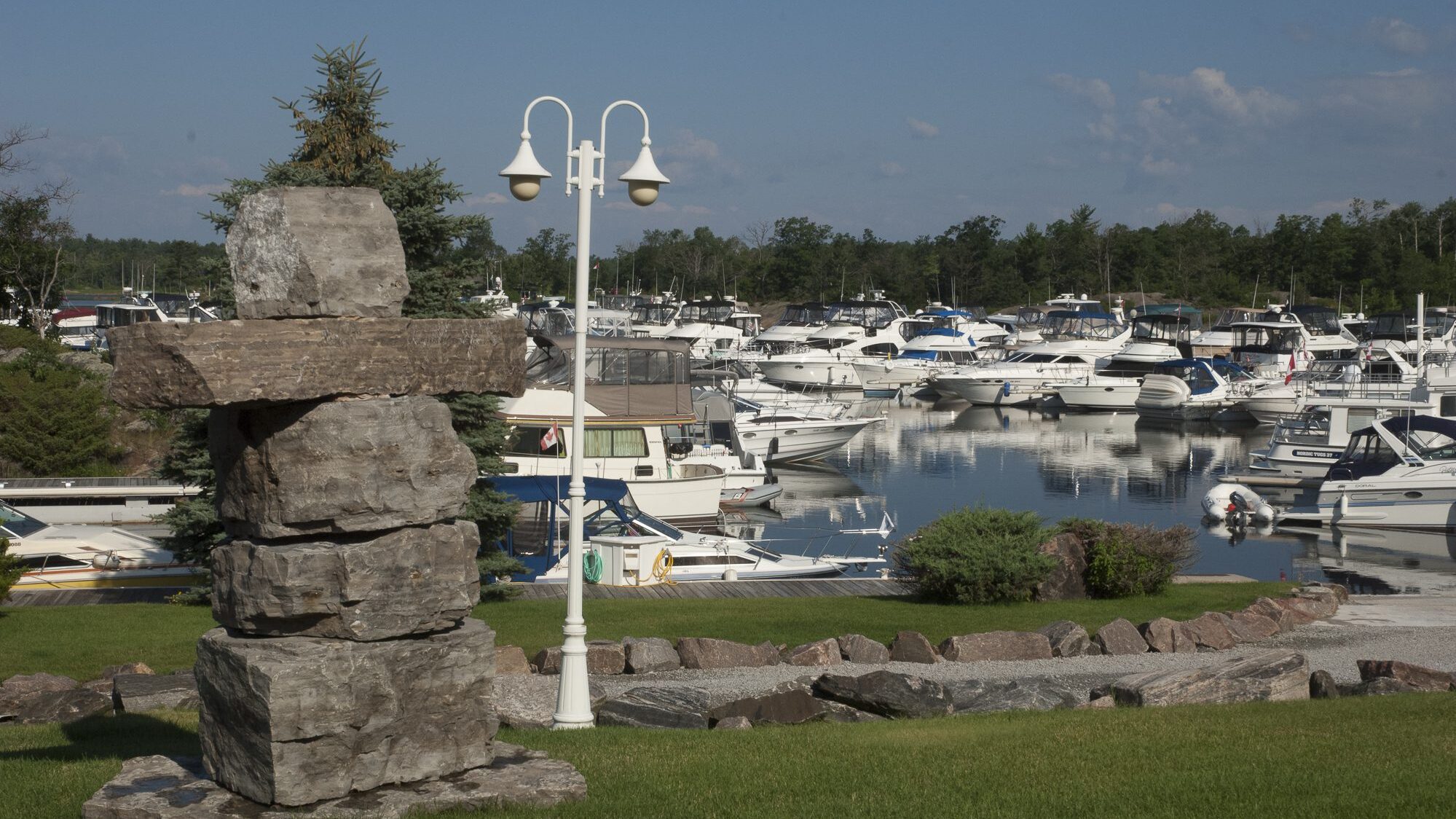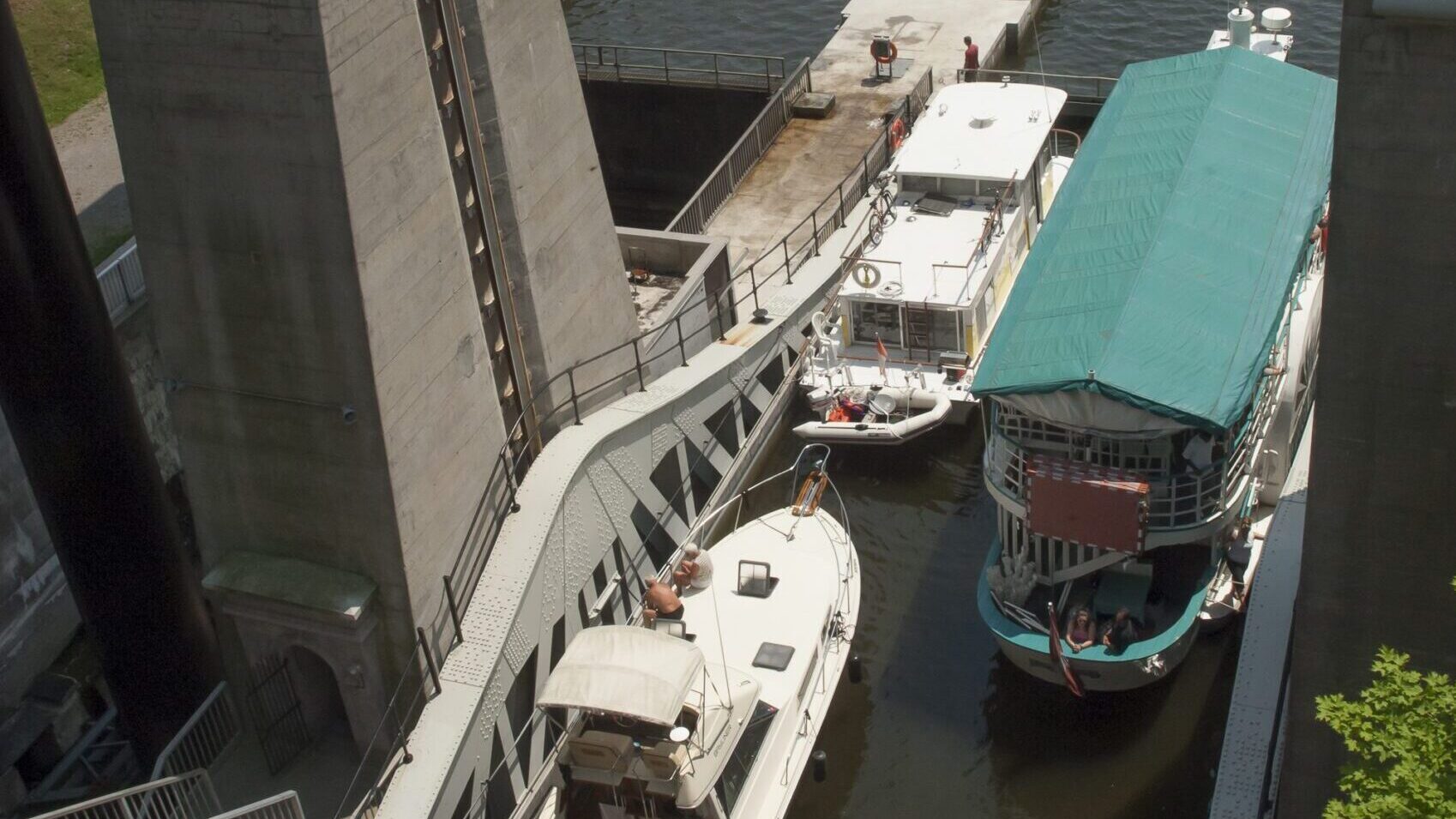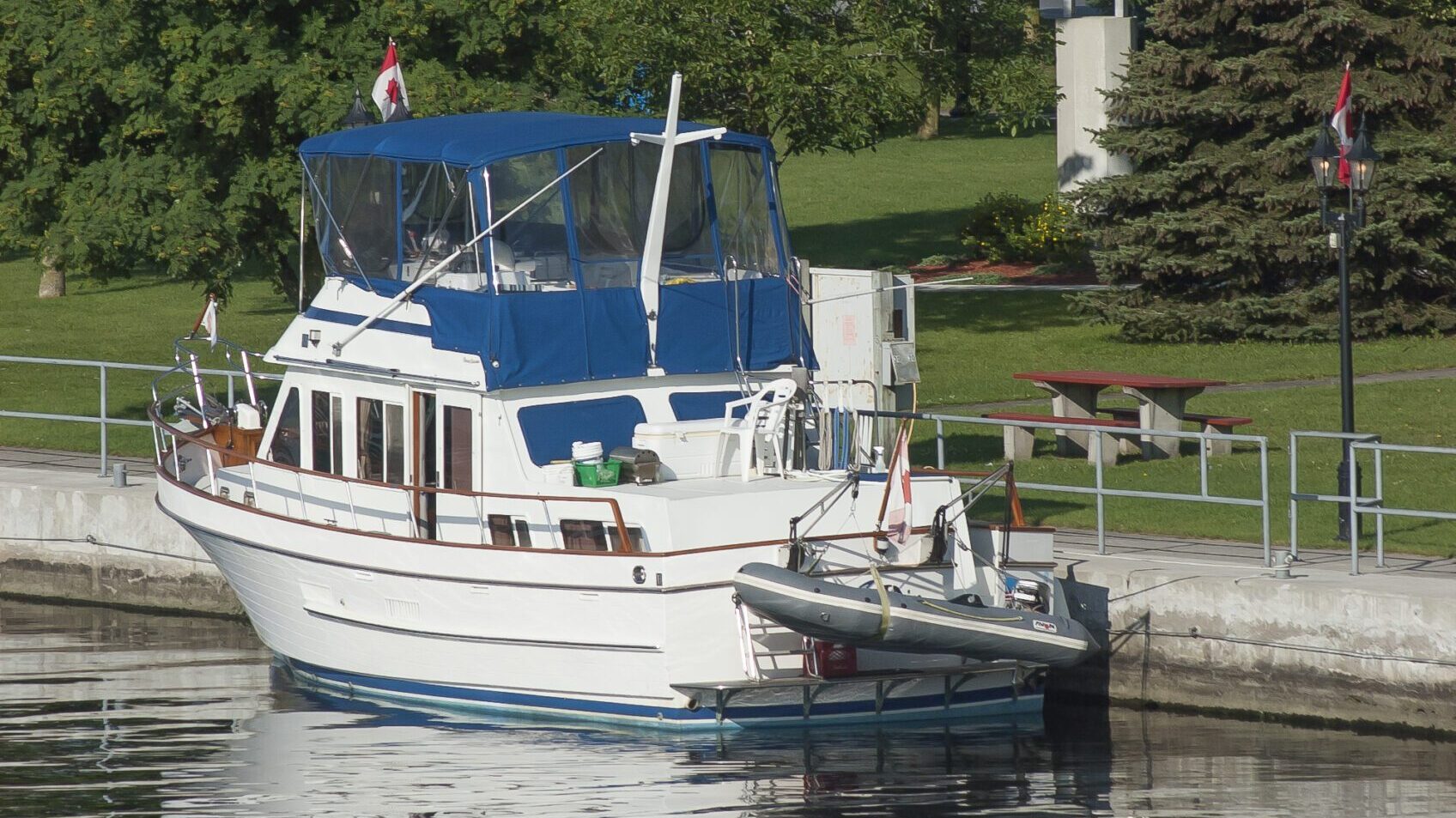Circumnavigating the eastern half of the U.S. and Canada
For many of us boaters the ultimate cruise is doing the Great Loop Cruise circumnavigating the eastern half of the U.S. and Canada at the helm of our own boat. In 2006-07 we made the trek with other Loopers exploring small harbor towns, remote anchorages and big city marinas. We followed a string of red and green markers to some amazing places where we relearned the history of our country and met interesting new friends. We savored every sunset at a pace all our own. Boating the Great Loop Cruise circumnavigating the eastern half of the U.S. and Canada is a boater’s dream cruise.
If doing the Loop is on your wish list, here’s advice about making the Loop Cruise on your boat. To get an idea of the 5-6,000 miles that make up the Great Loop Cruise pull out a good road map of the eastern half of the U.S. and Canada and look for a lopsided circle of connected rivers, lakes, canals, waterways and the Atlantic Ocean. These are mostly all protected waters. We began on the east coast on Chesapeake Bay and headed to Delaware Bay, south to Cape May and the Atlantic coast.

To circumnavigate the eastern half of the U.S. and Canada we went north up the coast of New Jersey to New York Harbor and the Hudson River. We continued until it ends at a junction at Troy, New York where you can go west on the Erie Canal or north to Lake Champlain. Choose either route because they both lead to Lake Ontario and Canada’s Trent-Severn Waterway. The waterway flows into Georgian Bay and North Channel of Lake Huron. From there cruising south on Lake Michigan leads to Chicago and the Illinois, Mississippi, Ohio and Tennessee Rivers.
At that point you’re on the Tennessee-Tombigbee Waterway that flows into Mobile Bay and the Gulf of Mexico. The Loop follows the Gulf coast of the Florida Panhandle to Southwest Florida. Then it crosses the state on the Okeechobee Waterway. Or go further south to the Florida Keys and down and around the southern tip of the state at Key West where you’re back on the ICW at Miami.
You complete the Loop when you cross your wake where you began, which for us was St. Michaels, Maryland on the Chesapeake Bay. You’ll meet countless other Loopers flying the familiar AGLCA (America’s Great Loop Cruising Assn) burgee and re-meet them time and again along the way. On our first night out at anchor in the C&D Canal we remember seeing the burgee and visiting with Loopers from Michigan. They were on the last leg of their Loop cruise returning to Lake Michigan; we were just beginning our first leg.
Timing an adventure in progress
If you live near the water you have a homeport, but we met several landlocked Loopers who bought a boat along the route and began and ended there. Some who bought a boat specifically for doing the Loop had a long-range plan of owning the boat for several years. Often they were from western or landlocked states or Europe and always dreamed of an extended cruise of living aboard.
While we completed the cruise in 11 months leaving in June and returning the following May, others planned to break up the time aboard. They spent the summer months to cruise an area, store their boat until the next season when they’d continue on their cruise. Many doing the Loop in a continuous cruise took a boat break and returned home for the holidays or for family events. Others went back to work after some flex-time off from their jobs. Some folks sold their house and moved aboard full-time using the Loop as a new beginning, others rented their home. or left it empty.
Advice from veteran Loopers
John and Sue Winter of North Carolina made their Loop cruise on Miss Liberty, a 39-foot Cruisers motoryacht. John advises ”Most folks we talked to, including us, went too fast during the first two months of the trip and then discovered they should slow down.” Pacing the cruise and knowing how long to stay in a place is totally up to you so it’s something you discover as you’re underway.
The proverbial Looper wisdom for timing the cruise pivots on being in northern waters in the summer and in southern waters in the winter. The cost of boat insurance is another incentive since most insurers issue policies requiring you to keep clear of southern waters until after the huricane season which ends in November. And they want you to be north of Cape Hatteras by June 1 when the season begins.
For many that means being in Florida during the winter months, heading north on the Intracoastal Waterway in Spring and spending summer in the Chesapeake Bay, Canada and Lake Michigan. In September and October Loopers are trekking down the inland rivers to points south, namely Mobile, the Gulf coast and Florida. In the winter many go on to cruise the Bahamas until Spring.
Knowing Your boat

When you’re underway your boat is your home, your shelter and your transportation so knowing how it works is important. We did the Loop on High Life our 36-foot Grand Banks trawler, which we’d cruised extensively before our adventure. However, many Loopers are new to boating so they had the added dimension of learning how to operate the boat and its systems under fire as they experienced new and different conditions. The wise ones chartered a boat or hired a captain for a few days to hone their skills.
We asked veteran Loopers about features of their boats they liked. New Jersey cruisers John Hauge who co-captains La Garza Verde, a 45-foot Ocean Alexander with wife Susan answered “the covered side decks.” He said “they keep us dry while line handling at docks and in locks.” And they always use wireless headsets to communicate with one another when approaching a dock or lock or anchoring, especially when there’s limited visibility. We saw this often especially on larger boats with high freeboards that made it impossible for the person at the helm to see what was happening on deck.
Docking with spring lines
When we bought our boat we didn’t notice the mid-ship cleats, but we use them to secure spring lines whenever we’re approach a dock. They’re really handy docking when there’s no one to catch a line. First Katie secures the fenders and Gene brings the boat close enough so she can get off with the spring attached to the mid-ship cleat. When the spring line is secured to the dock it stops the boat. Gene turns the helm away from the dock and puts the boat in forward while the engine is idling. The boat stays against the dock even against the wind. Gene then gets off with a bow or stern line, whichever is needed.
We use the same technique approaching a lock using a line amidship secured around a pipe or bollard on the wall.
Barry and Sheryl Lilly of Michigan appreciate the upper deck of Seaquel, their Mainship 390. “It provided us with good visibility to see crab pots and identify obstructions in the water“ which can be a challenge. And they liked having a wide stairway to the bridge and a deck with a secure walk-around.
Cruising tempered by Mother Nature
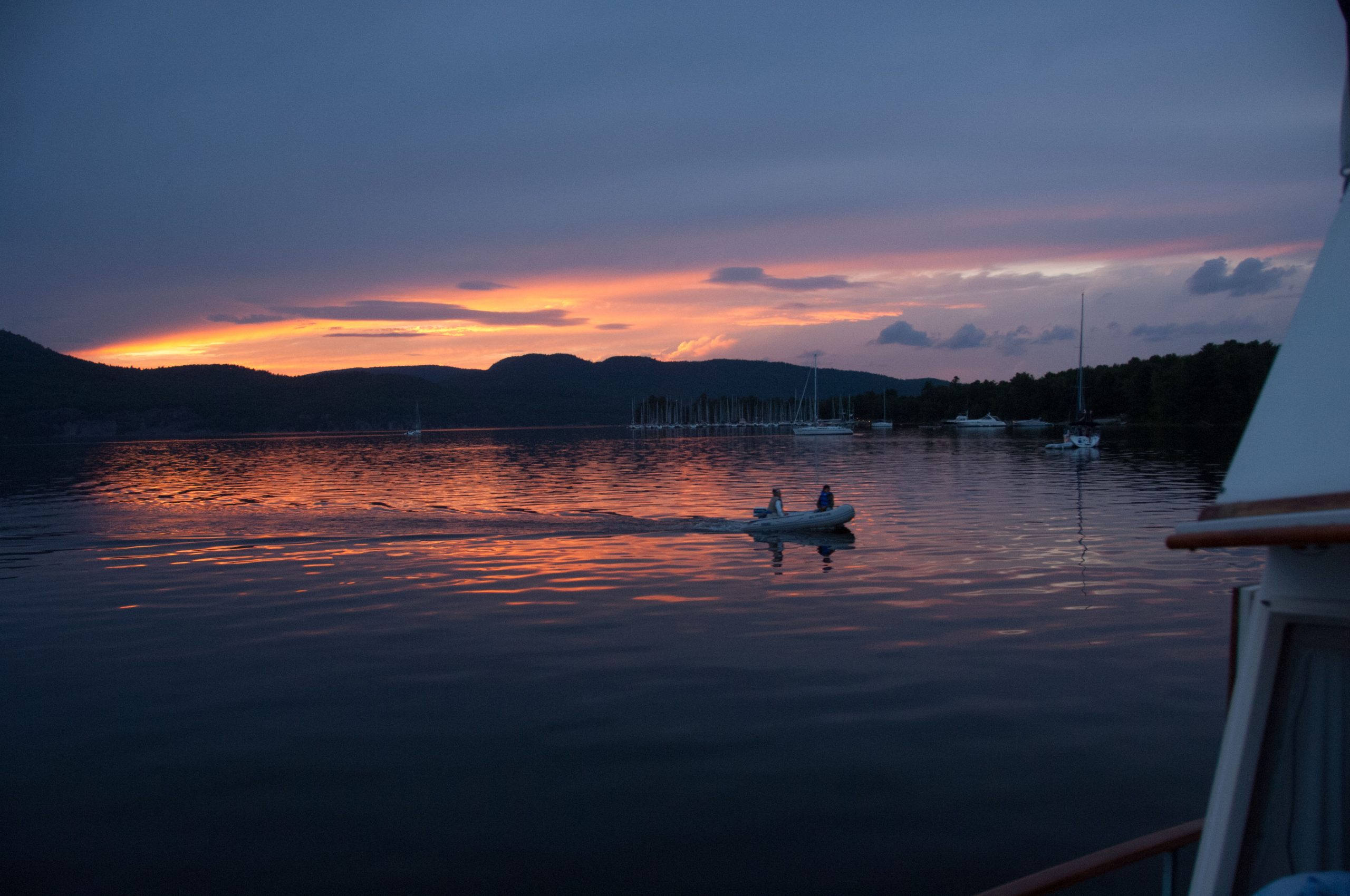
If you’re a cruising veteran you know how long you like to be underway, whether you prefer marinas or anchorages and how much time you like to spend ashore. On long stretches of the Loop we found it was different from a typical cruise because it was our way of life, not a vacation. What you’ll learn about yourself is how it works best for you and your crew. We have broad general intentions of where we’d like to be and when, but not an Excel spreadsheet with dates and destinations. You’ll meet Loopers who mosey along at 6 knots and stop at every port of call and others who blow by you at 30 miles an hour. Some will try to follow a rigid itinerary and others will be so laidback you’ll worry about them.
You’ll develop your own pace, but remember it will be tempered by things you can’t control. We had delays for hours by a fire aboard a freighter in Morehead City, North Carolina that closed the harbor. A Georgia bridge couldn’t open because it was damaged when a loaded cement truck slammed into it. Another time railroad workmen fixing the track on an Amtrack bridge over the Chicago River delayed us for hours.

Weather wisdom
And then there’s Mother Nature who plays an uncanny role in doing the Loop cruise. A spring flood in upstate New York damaged locks and closed the flood gates on the Erie Canal stopping all traffic for weeks. A week long late summer rain storm in the Ohio River Valley can swell the Ohio River to amazing heights making it dangerous to travel. Power outages from a tornado or a winter drought can create shallow inlets only passable at high tide. Those are just a sampling of how weather can stop you in your tracks. If there’s a fluke of Mother Nature it’ll probably happen while you’re on your boat and the only way to handle it is go with the flow.
Another challenge was nasty Asian Carp making its way up the inland rivers threatening the Great Lakes and its fishing industry. In the Fall of 2009 Loopers waited in Chicago while the U.S. Corp of Engineers laid an electronic barrier to prevent the carp from reaching the lakes fearing they could wipe out native fish species and devastate a $7 billion-a-year fishing industry.
If you’re considering making this wonderful boating adventure join the America Great Loop Cruisers’ Assn. The group is the best source of current information about doing the Loop for planning the trip and learning from boaters doing the Loop in real time.
Two good sources of current regional news and fuel prices are waterwayguide.com and CruisersNet.
You might also be interested in:- Choosing Binoculars for Boating
- A North Carolina Cruise Story
- Boating on Lake Huron
- Cruising Lake Champlain
- Boating on the Intracoastal Waterway
Gene and Katie Hamilton are veteran sail and power boaters and award winning boating writers. They are authors of Coastal Cruising Under Power and Practical Boating Skills. They are members of the Outdoor Writers Association of America.
Post Views: 1,801
|
